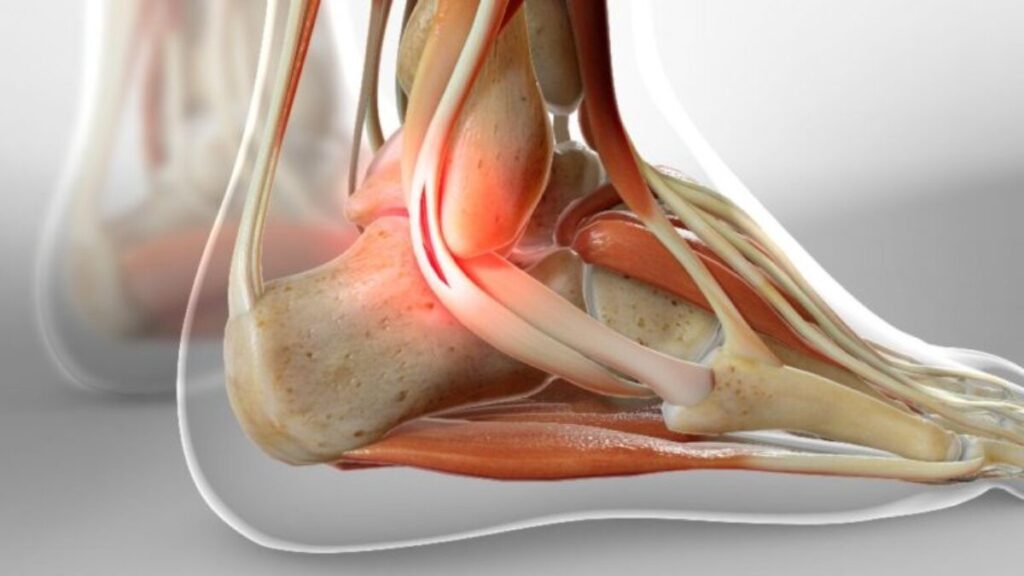Platelet-Rich Fibrin (PRF)
A natural treatment using your own blood to stimulate healing, reduce inflammation, and support tissue regeneration in joints, tendons, and ligaments.
At a glance
About
Ideal for patients seeking a regenerative alternative to steroid or surgical interventions.
Effective
Referrals
Not Needed
Booking
Instant-book option available
Cost
X
Nature of PRF Injections
PRF injections use a patient’s own blood to promote healing and tissue regeneration. After a small blood draw, the sample is processed to concentrate platelets and fibrin into a gel-like substance. This is injected directly into the injured or degenerated area to support natural recovery. The procedure is performed in a clinic and typically requires no downtime. Multiple sessions may be advised depending on the condition.
Common Causes of Conditions Treated by PRF Injections
Joint and soft tissue problems treated with PRF injections are often due to:
Tendon wear: Repetitive use can cause chronic tendon strain.
Joint degeneration: Age or overuse can reduce tissue quality.
Ligament sprains: Micro-tears that need regenerative support.
Post-surgical healing: Enhances soft tissue recovery.
Soft tissue injuries: Supports repair of muscles and fascia.
Diagnosing Suitability for PRF Injections
Diagnosis begins with a clinical review of your symptoms, such as joint stiffness, pain, or slowed healing. The clinician will examine your history of injury or degeneration and may recommend imaging like ultrasound or MRI to assess tissue condition. If regenerative healing is needed and standard treatments haven’t helped, PRF injections may be a suitable next step.
Suitable for
Tendon & Ligament Repair

Early Osteoarthritis Management

Treatment overview
PRF treatment begins with drawing a small sample of your blood. It’s spun in a special centrifuge to separate platelets and fibrin from other components. This concentrated PRF is then injected into the area needing repair. The entire process is completed in one visit, usually within 30–45 minutes.
The fibrin matrix gradually releases growth factors at the site of injury, encouraging cell repair and tissue healing over time. Results are not instant but develop steadily over several weeks. Depending on severity, follow-up injections may be advised.

Benefits

Natural healing process

No synthetic additives

Minimally invasive

Tissue regeneration support
How to Pay
We offer a range of flexible payment options to make your treatment experience smooth and stress-free.
Paying for Yourself (Preferred Option)
Most patients choose to self-fund their treatment. We accept:
- Bank Transfers
- Credit/Debit Cards
- Cash (in person only)
Instalment Plans
We’ve partnered with GoCardless to offer interest-free instalment options. You can easily set up a Direct Debit to spread the cost of your treatment over time.
Finance Options
Looking for a financing plan? You can apply through Kandoo, our trusted finance partner.
- Instant online decision
- No impact on your credit score
- Multiple lenders for competitive rates
Private Medical Insurance (Limited Availability)
We work with a small number of approved insurance providers. However, due to restrictions from many insurers, not all treatments are covered. Please check with your insurer and speak to our team before booking to avoid disappointment.
The booking process
Online booking/call
Use our Calendly to book an initial consultation, or give us a call.
01
consultation
If you are a new patient, our doctors might arrange a consultation before treatment.
02
Treatment
You will be booked in for treatment.
03
Follow up
Our doctors might arrange a follow-up consultation, to check your response to treatment.
04
Discharge
Once your doctor is happy with your recovery, you will be discharged. After discharge, we are always here for further questions or support, should you need it.
05
Frequently Asked Questions
Is PRF the same as PRP?
PRF contains more growth factors and uses no additives, making it more natural and longer-acting than PRP.
How soon will I see results?
Gradual improvement usually begins within a few weeks, with best results after multiple sessions.
Injection Treatment Comparison
Explore the key differences between leading injection therapies used in joint, tendon, and cartilage care. Compare their effectiveness, uses, recovery time, and potential drawbacks to help guide your treatment decisions.
Injection Type | Best For | Effectiveness (⭐ out of 5) | What It Does | Recovery Time | Downside |
|---|
Hyaluronic Acid (HA) Injection
Injection Type | Best For | Effectiveness (⭐ out of 5) | What It Does | Recovery Time | Downside |
|---|---|---|---|---|---|
Hyaluronic Acid (HA) Injection
| Mild to moderate knee osteoarthritis, joint lubrication
| Lubricates joints, reduces friction, and relieves pain in osteoarthritis. | Immediate return to daily activities, effects last 3-12 months.
| Short-term relief, effects wear off over time; does not regenerate cartilage.
|
Cartilage Matrix Injection
Injection Type | Best For | Effectiveness (⭐ out of 5) | What It Does | Recovery Time | Downside |
|---|---|---|---|---|---|
Cartilage Matrix Injection | Moderate to severe cartilage damage, osteoarthritis, surgical augmentation | Provides a structural scaffold to support cartilage repair and regeneration. | Minimal downtime, improvement in 4-6 weeks, lasting 6-12 months. | May lead to mild inflammation or combination with other therapies for best results |
Arthrosamid Injection (Hydrogel)
Injection Type | Best For | Effectiveness (⭐ out of 5) | What It Does | Recovery Time | Downside |
|---|---|---|---|---|---|
Arthrosamid Injection (Hydrogel) | People with knee osteoarthritis who still have pain or stiffness after other treatments. | Arthrosamid is a hydrogel injected into the knee. It cushions and lubricates the joint, helping reduce pain and improve movement. | You can usually walk right after treatment. Some swelling or discomfort may last a few days, with benefits building over weeks. | Possible side effects include temporary swelling, infection risk, or irritation. It may not work for everyone and can be more costly than standard injections. |
PRP (Platelet-Rich Plasma) Injection
Injection Type | Best For | Effectiveness (⭐ out of 5) | What It Does | Recovery Time | Downside |
|---|---|---|---|---|---|
PRP (Platelet-Rich Plasma) Injection | Tendon injuries, mild arthritis, post-surgical healing. | Uses growth regulators from the patient’s own blood to stimulate healing and reduce inflammation. Work well on ligaments and tendons. | Minimal downtime, improvement seen in 4-6 weeks, lasting 6-12 months. | Not very effective for established Arthritis. Unless combined with other treatments. |
mFAT (Microfragmented Adipose Tissue) Injection
Injection Type | Best For | Effectiveness (⭐ out of 5) | What It Does | Recovery Time | Downside |
|---|---|---|---|---|---|
mFAT (Microfragmented Adipose Tissue) Injection | Moderate to severe arthritis, joint degeneration, soft tissue repair | Fat-derived stem cells injected into joints to reduce inflammation and promote tissue repair. | Light activity immediately, pain relief in 2-4 weeks, lasting 6-24 months | Requires minor liposuction to harvest fat; may not be as effective in severe arthritis |
BMAC (Bone Marrow Aspirate Concentrate) Injection
Injection Type | Best For | Effectiveness (⭐ out of 5) | What It Does | Recovery Time | Downside |
|---|---|---|---|---|---|
BMAC (Bone Marrow Aspirate Concentrate) Injection | Fracture healing. Previously used for cartilage regeneration; less preferred due to inconsistent results | Bone marrow cells injected for potential cartilage repair, but effectiveness varies. | Minimal restrictions, noticeable effects in 3 months, full benefits in 6-12 months. | Inconsistent results, Very invasive; less preferred compared to other regenerative options. |
Cortisone (Steroid) Injection
Injection Type | Best For | Effectiveness (⭐ out of 5) | What It Does | Recovery Time | Downside |
|---|---|---|---|---|---|
Cortisone (Steroid) Injection | Severe inflammation, advanced arthritis pain management (short-term use only) | ⭐
(Anti-Inflammatory) | Powerful anti-inflammatory, provides temporary pain relief but accelerates joint degeneration. | Immediate pain relief, but potential long-term cartilage damage. Best when mixed with PRP & HA to reduce toxicity. | Toxic to cartilage; long-term use can accelerate joint degeneration. |
Exosome Injection
Injection Type | Best For | Effectiveness (⭐ out of 5) | What It Does | Recovery Time | Downside |
|---|---|---|---|---|---|
Exosome Injection | Early-stage arthritis, tendon injuries, inflammation modulation, post-surgical recovery. | Delivers signaling molecules that promote regeneration, reduce inflammation, and support healing at a cellular level. | Minimal downtime, improvement seen in 3-6 weeks, lasting 6-12 months. | Still experimental; effectiveness varies depending on the condition treated. |
Injection Type | Best For | Effectiveness (⭐ out of 5) | What It Does | Recovery Time | Downside |
|---|---|---|---|---|---|
Hyaluronic Acid (HA) Injection | Mild to moderate knee osteoarthritis, joint lubrication | ⭐⭐⭐ | Lubricates joints, reduces friction, and relieves pain in osteoarthritis. | Immediate return to daily activities, effects last 3-12 months.
| Short-term relief, effects wear off over time; does not regenerate cartilage.
|
Cartilage Matrix Injection | Moderate to severe cartilage damage, osteoarthritis, surgical augmentation | ⭐⭐⭐⭐⭐ | Provides a structural scaffold to support cartilage repair and regeneration. | Minimal downtime, improvement in 4-6 weeks, lasting 6-12 months. | May lead to mild inflammation or combination with other therapies for best results |
Arthrosamid Injection (Hydrogel) | Moderate to severe knee osteoarthritis, locking in regeneration effects, shielding the synovium | ⭐⭐⭐⭐
(Anti-degeneration) | Does not regenerate cartilage but indirectly reduces inflammation and protects the joint. | Immediate return to activities, full effect in 2-4 weeks, lasts 12-24 months | Does not regenerate cartilage, only helps maintain improvements and Side effect profile. |
PRP (Platelet-Rich Plasma) Injection | Tendon injuries, mild arthritis, post-surgical healing. | ⭐⭐⭐ | Uses growthregfactors from the patient’s own blood to stimulate healing and reduce inflammation. Work well on ligaments and tendons. | Minimal downtime, improvement seen in 4-6 weeks, lasting 6-12 months. | Not very effective for established Arthritis. Unless combined with other treatments. |
mFAT (Microfragmented Adipose Tissue) Injection | Moderate to severe arthritis, joint degeneration, soft tissue repair | ⭐⭐⭐⭐ | Fat-derived stem cells injected into joints to reduce inflammation and promote tissue repair. | Light activity immediately, pain relief in 2-4 weeks, lasting 6-24 months | Requires minor liposuction to harvest fat; may not be as effective in severe arthritis |
BMAC (Bone Marrow Aspirate Concentrate) Injection | Fracture healing. Previously used for cartilage regeneration; less preferred due to inconsistent results | ⭐⭐ | Bone marrow cells injected for potential cartilage repair, but effectiveness varies. | Minimal restrictions, noticeable effects in 3 months, full benefits in 6-12 months. | Inconsistent results, Very invasive; less preferred compared to other regenerative options. |
Cortisone (Steroid) Injection | Severe inflammation, advanced arthritis pain management (short-term use only) | ⭐
(Anti-Inflammatory) | Powerful anti-inflammatory, provides temporary pain relief but accelerates joint degeneration. | Immediate pain relief, but potential long-term cartilage damage. Best when mixed with PRP & HA to reduce toxicity. | Toxic to cartilage; long-term use can accelerate joint degeneration. |
Exosome Injection | Early-stage arthritis, tendon injuries, inflammation modulation, post-surgical recovery. | ⭐⭐⭐ | Delivers signaling molecules that promote regeneration, reduce inflammation, and support healing at a cellular level. | Minimal downtime, improvement seen in 3-6 weeks, lasting 6-12 months. | Still experimental; effectiveness varies depending on the condition treated. |
Hyaluronic Acid (HA) Injection
Best For
Mild to moderate knee osteoarthritis, joint lubrication
What It Does
Lubricates joints, reduces friction, and relieves pain in osteoarthritis.
Recovery Time
Immediate return to daily activities, effects last 3-12 months.
Downside
Short-term relief, effects wear off over time; does not regenerate cartilage.
Cartilage Matrix Injection
Best For
Moderate to severe cartilage damage, osteoarthritis, surgical augmentation
What It Does
Provides a structural scaffold to support cartilage repair and regeneration.
Recovery Time
Minimal downtime, improvement in 4-6 weeks, lasting 6-12 months.
Downside
May lead to mild inflammation or combination with other therapies for best results
Arthrosamid Injection (Hydrogel)
Best For
People with knee osteoarthritis who still have pain or stiffness after other treatments.
What It Does
Arthrosamid is a hydrogel injected into the knee. It cushions and lubricates the joint, helping reduce pain and improve movement.
Recovery Time
You can usually walk right after treatment. Some swelling or discomfort may last a few days, with benefits building over weeks.
Downside
Possible side effects include temporary swelling, infection risk, or irritation.
PRP (Platelet-Rich Plasma) Injection
Best For
Tendon injuries, mild arthritis, post-surgical healing.
What It Does
Uses growth regulators from the patient’s own blood to stimulate healing and reduce inflammation. Work well on ligaments and tendons.
Recovery Time
Minimal downtime, improvement seen in 4-6 weeks, lasting 6-12 months.
Downside
Not very effective for established Arthritis. Unless combined with other treatments.
mFAT (Microfragmented Adipose Tissue) Injection
Best For
Moderate to severe arthritis, joint degeneration, soft tissue repair
What It Does
Fat-derived stem cells injected into joints to reduce inflammation and promote tissue repair.
Recovery Time
Light activity immediately, pain relief in 2-4 weeks, lasting 6-24 months
Downside
Requires minor liposuction to harvest fat; may not be as effective in severe arthritis
BMAC (Bone Marrow Aspirate Concentrate) Injection
Best For
Fracture healing. Previously used for cartilage regeneration; less preferred due to inconsistent results
What It Does
Bone marrow cells injected for potential cartilage repair, but effectiveness varies.
Recovery Time
Minimal restrictions, noticeable effects in 3 months, full benefits in 6-12 months.
Downside
Inconsistent results, Very invasive; less preferred compared to other regenerative options.
Cortisone (Steroid) Injection
Best For
Severe inflammation, advanced arthritis pain management (short-term use only)
What It Does
Powerful anti-inflammatory, provides temporary pain relief but accelerates joint degeneration.
Recovery Time
Immediate pain relief, but potential long-term cartilage damage. Best when mixed with PRP & HA to reduce toxicity.
Downside
Toxic to cartilage; long-term use can accelerate joint degeneration.
Exosome Injection
Best For
Early-stage arthritis, tendon injuries, inflammation modulation, post-surgical recovery.
What It Does
Delivers signaling molecules that promote regeneration, reduce inflammation, and support healing at a cellular level.
Recovery Time
Minimal downtime, improvement seen in 3-6 weeks, lasting 6-12 months.
Downside
Still experimental; effectiveness varies depending on the condition treated.
Schedule A Discovery Call With Us
Don’t wait to find relief. Whether it’s a consultation, scan, or treatment, we’re ready to help.
